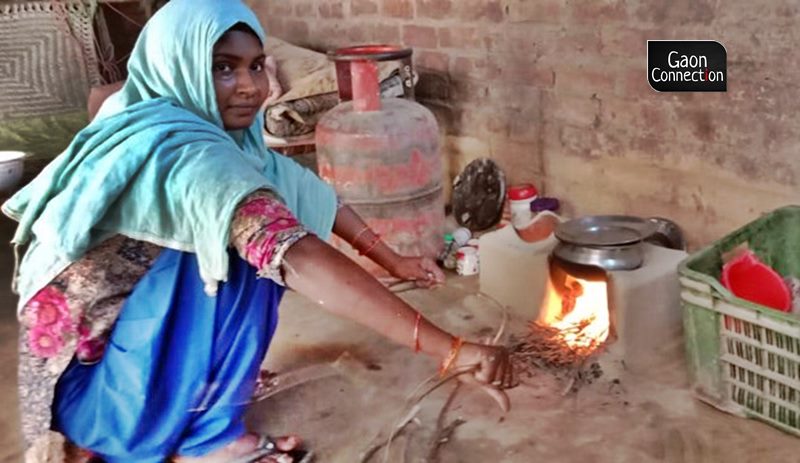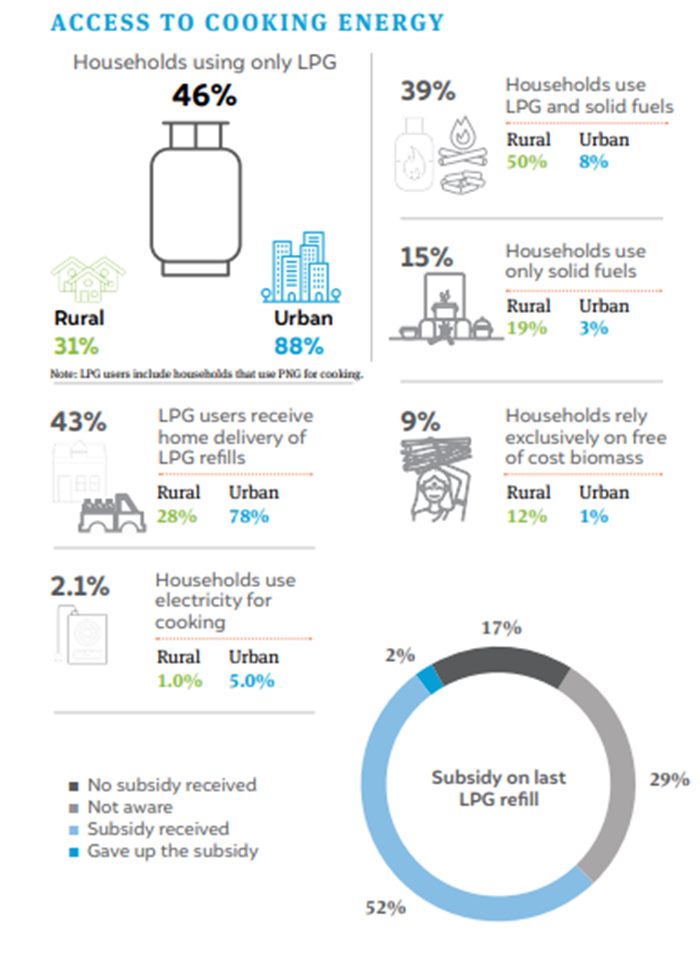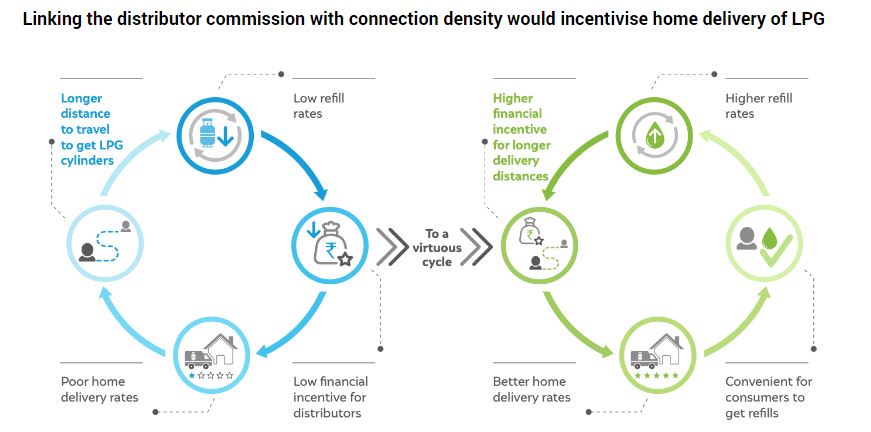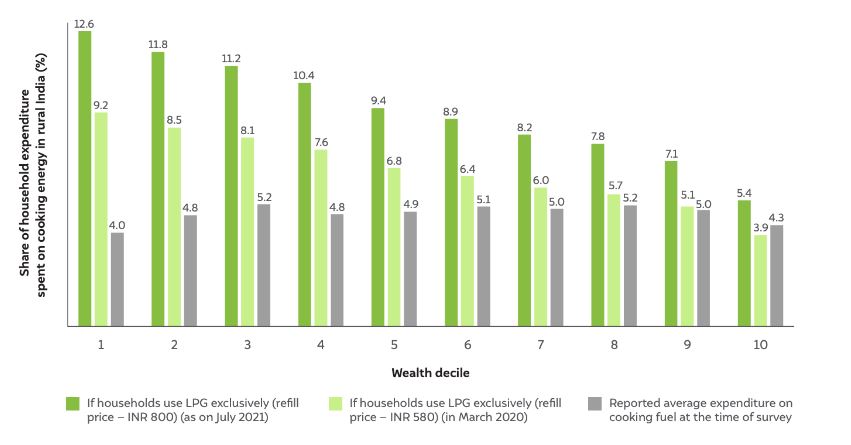54% Indian households still using firewood, cow dung as cooking fuel: Study
The study noted that lower household incomes during the COVID19 pandemic and the suspension of LPG subsidies in May 2020 have made LPG unaffordable for the underprivileged section of the population.


Reasons for fuel stacking include a preference for cooking on traditional chulhas (72 per cent of households), the availability of free biomass (59 per cent of households), and the limited availability of LPG refills (46 per cent of households).
According to a study conducted to assess the cooking fuel consumption of Indian households, almost 54 per cent of the households are still either fully reliant on solid fuels or supplement it with LPG (liquefied petroleum gas) connections. The study also found that this is despite 85 per cent of the households having access to LPG cylinders.
The study titled ‘State of Clean Cooking Energy Access in India’ was conducted by Council on Energy, Environment and Water (CEEW), a New Delhi-based not-for-profit organisation. It was published on September 6.
The study also noted that more than 70 per cent of the households are using LPG as their primary fuel for cooking purposes.
CEEW’s findings are from the India Residential Energy Survey (IRES) 2020, conducted in collaboration with the Initiative for Sustainable Energy Policy (ISEP). The survey, conducted before the pandemic during the year 2019-20, covered nearly 15,000 urban and rural households across 152 districts in India’s 21 most populous states.

Study’s major findings
“84 per cent of households that use traditional solid fuels along with LPG cite high cylinder costs as one of their reasons for stacking fuels. This finding is significant in the context of the ongoing surge in LPG prices, which have risen by INR 240 per cylinder (a 40 per cent hike) over the past one year,” the study mentioned.
The study also added that lower household incomes during the COVID19 pandemic and the suspension of LPG subsidies in May 2020 have made LPG unaffordable for the underprivileged of the population
Other reasons for fuel stacking include a preference for cooking on traditional chulhas (72 per cent of households), the availability of free biomass (59 per cent of households), and the limited availability of LPG refills (46 per cent of households).

“The government deserves much credit for its efforts to expand clean cooking energy access, primarily through the first phase,” Shalu Agrawal, Senior Programme Lead, CEEW, was quoted in the press statement.
“Phase II of PMUY should focus on bridging the coverage gap through targeted beneficiary identification, improved enrolment processes, and awareness campaigns. Further, policymakers should prioritise reinstating LPG refill subsidies to wean consumers away from solid fuels, which disproportionately impact the health of women and children,” she added.
Key recommendations of the study
- Facilitate LPG connections for households left out of PMUY by improving the enrolment process and conducting awareness campaigns and targeted beneficiary identification.
- Provide adequate yet targeted subsidies to make LPG affordable. Three potential approaches could be explored for targeting LPG subsidies: Limit subsidy provision to up to 7–8 LPG refills annually, which is the average consumption of exclusive LPG users in rural and urban India. This could help save 13–15 per cent of the LPG subsidy outlay.
- Use robust indicators to exclude all households with a high income/wealth status. For instance, the current income-based exclusion limit for LPG subsidy could be lowered from INR 1 million/ year (USD 13,700) to INR 250,000/year (USD 3,425), which would help exclude a large share of households.
- Employ a consumption-linked subsidy approach, where the historic refill rate (from oil marketing companies [OMCs’] consumer data) could be used to provide higher subsidies to consumers with lower LPG consumption in recent years.
- Strengthen the LPG distributor network and provide a higher distribution commission for rural areas.
- Create an opportunity cost for biomass or an opportunity cost of time for those who procure and prepare biomass to meet their cooking energy needs.
Ujjwala scheme for increasing LPG coverage in India
Meanwhile, Gaon Connection recently reported on the challenges faced by Union government’s Ujjwala scheme and also zoomed in on the health consequences of indoor pollution caused by the burning of solid fuels in the Indian kitchens.
The Ujjwala scheme was launched on May 1, 2016 in Ballia, Uttar Pradesh by Prime Minister Narendra Modi. According to the ministry of petroleum, so far free of cost gas cylinders have been alloted to 80,699,686 households across India. Under Ujjwala 2.0, 10 million new LPG connections are being given with the first refill of the cylinder free of cost.

Gaon Connection‘s report also mentioned that rural women are facing the worst brunt of the effects of cooking with solid fuels like firewood, cow dung or even plastic bags which are a serious health hazard.
Also, according to the World Health Organization (WHO), each year, worldwide close to four million people die prematurely from illness attributable to household air pollution from inefficient cooking practices using polluting stoves along with solid fuels and kerosene.
“Small particulate matter and other pollutants in indoor smoke inflame the airways and lungs, impairing immune response and reducing the oxygen-carrying capacity of the blood. There is also evidence of links between household air pollution and low birth weight, tuberculosis, cataract, nasopharyngeal and laryngeal cancers,” WHO said in its fact sheet published on May 8, 2018.
Also Read: Despite having LPG cylinders, rural women are back cooking on woodfired stoves

